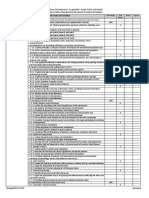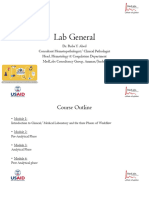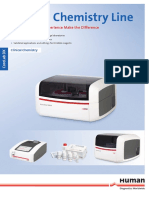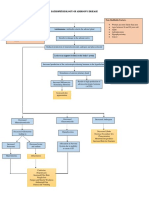0% found this document useful (0 votes)
24 views4 pagesModule 4 @
A semi-auto analyzer is a laboratory instrument that automates part of biochemical testing for samples like blood and urine, enhancing speed and accuracy while still requiring human intervention. It is commonly used in clinical settings for various tests, including blood glucose and liver function tests, as well as in experimental research for enzyme activity and metabolite quantification. This tool is particularly beneficial for small to medium-sized labs, balancing efficiency and control in testing processes.
Uploaded by
alfiyamujawar0410Copyright
© © All Rights Reserved
We take content rights seriously. If you suspect this is your content, claim it here.
Available Formats
Download as PDF, TXT or read online on Scribd
0% found this document useful (0 votes)
24 views4 pagesModule 4 @
A semi-auto analyzer is a laboratory instrument that automates part of biochemical testing for samples like blood and urine, enhancing speed and accuracy while still requiring human intervention. It is commonly used in clinical settings for various tests, including blood glucose and liver function tests, as well as in experimental research for enzyme activity and metabolite quantification. This tool is particularly beneficial for small to medium-sized labs, balancing efficiency and control in testing processes.
Uploaded by
alfiyamujawar0410Copyright
© © All Rights Reserved
We take content rights seriously. If you suspect this is your content, claim it here.
Available Formats
Download as PDF, TXT or read online on Scribd
/ 4




























































































